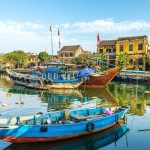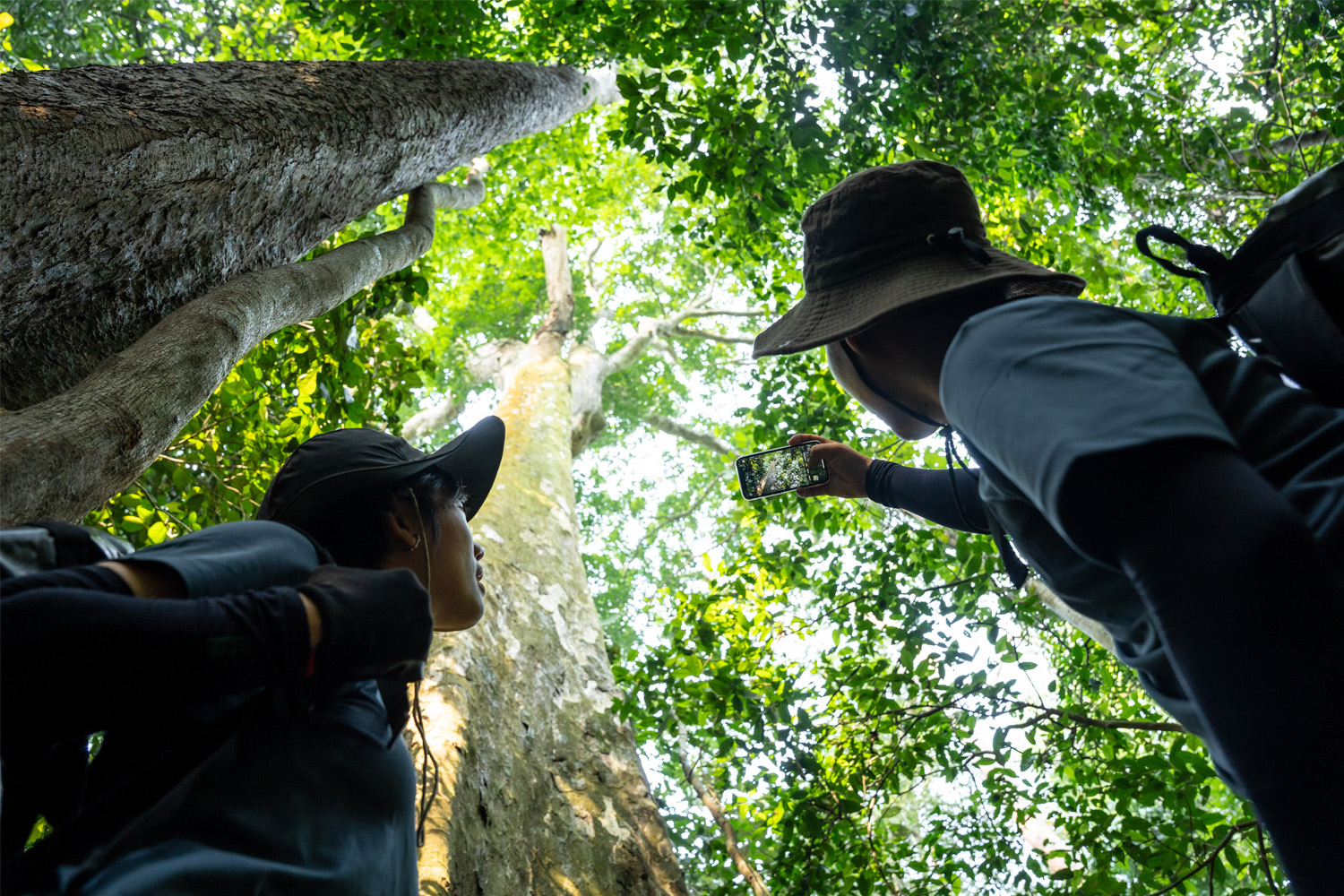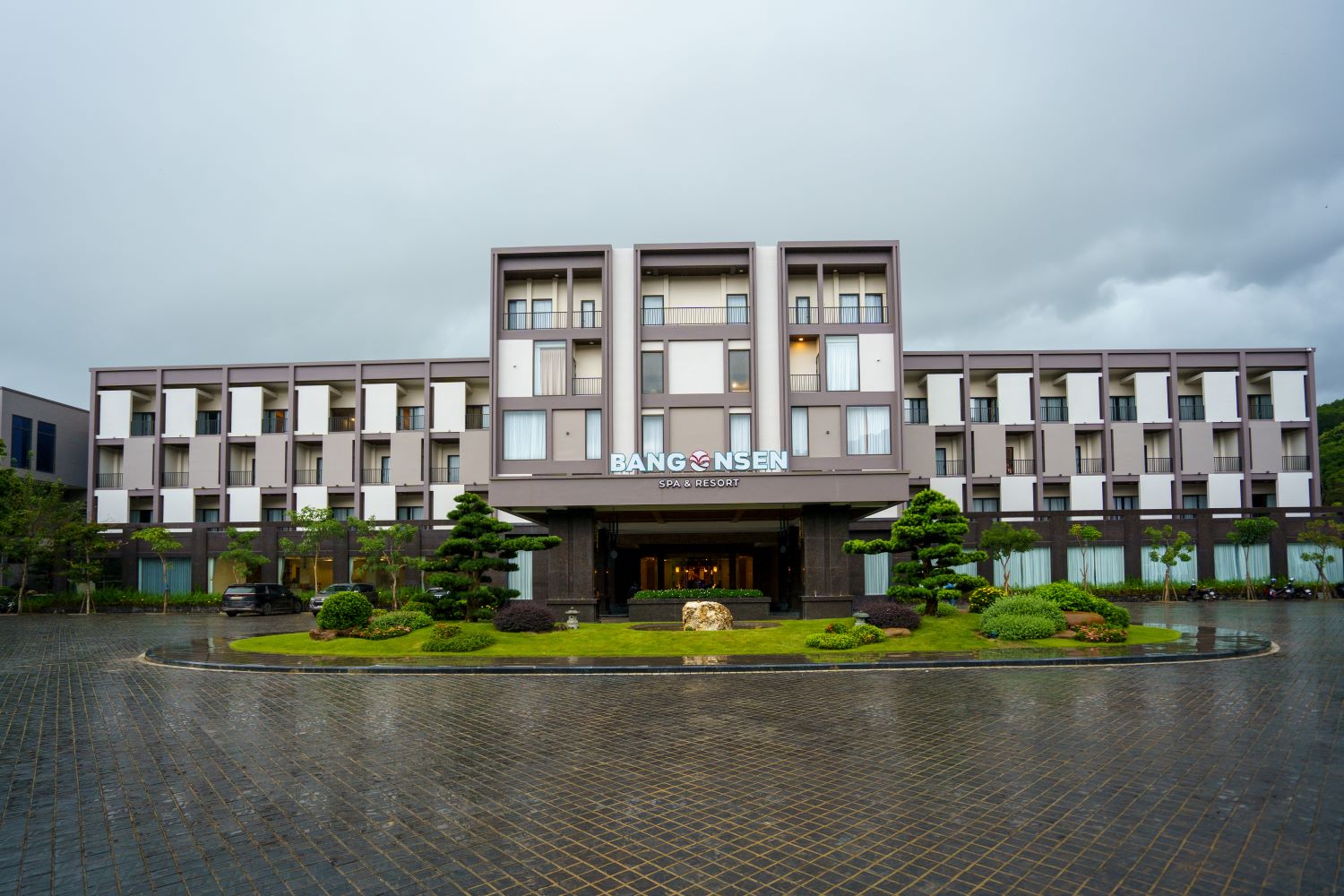Phong Nha – Ke Bang National Park is a paradise for cave explorers, home to breathtaking underground worlds, from easy-access show caves to challenging adventure caves. This complete guide covers everything you need to know for an unforgettable caving experience in Vietnam’s ultimate cave destination.
Overview of Phong Nha – Ke Bang National Park
Phong Nha – Ke Bang National Park is located in Bo Trach District, Quang Binh Province, Vietnam. The park spans 123,326 ha across the communes of Tan Trach, Thuong Trach, Phuc Trach, Xuan Trach, and Phong Nha Town. Phong Nha – Ke Bang National Park is the biggest national park in Vietnam. The park consists of three zones:
- The strict protection zone (100,296 ha);
- The ecological restoration zone (19,619 ha);
- The administrative service zone (3,411 ha).
Phong Nha – Ke Bang National Park was recognized as a UNESCO World Natural Heritage Site in 2003 for its unique geological formations. It then received a second UNESCO designation in 2015 for its remarkable biodiversity.
The landscape in Phong Nha – Ke Bang National Park is dominated by limestone mountains, forming an extensive karst terrain that has earned Phong Nha the title of “Kingdom of Caves.” Over 368 caves, spanning more than 231 km, have been explored by the British-Vietnamese Caving Expedition Team.
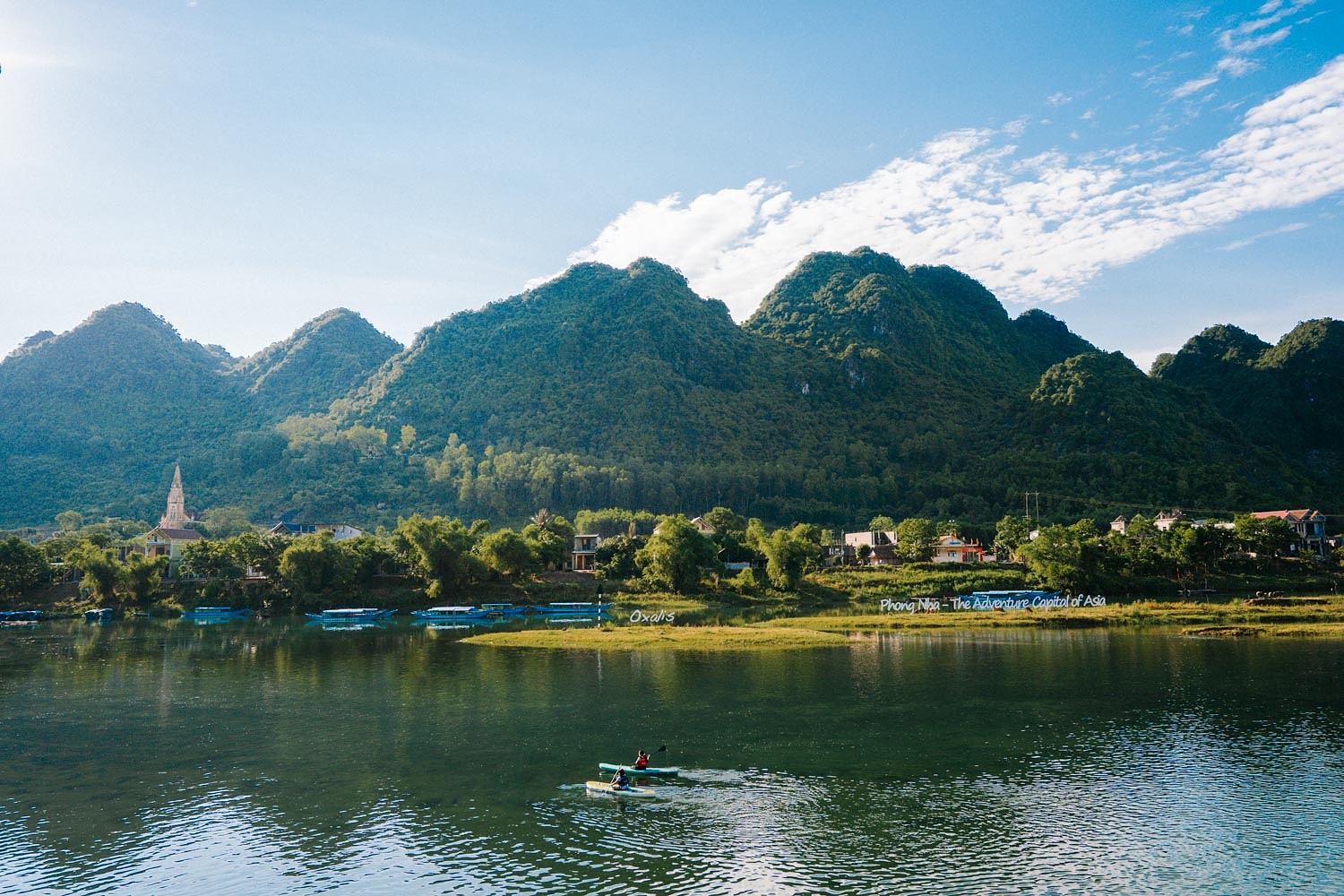
Phong Nha – Ke Bang National Park is a biodiversity hotspot, featuring 15 habitat types and 10 significant vegetation types. It’s also home to 1,394 animal species, including 82 listed in the Vietnam Red Book. In the past 20 years, scientists have discovered 42 new species in Phong Nha – Ke Bang National Park. This highlights its global importance in terms of ecology. With its breathtaking caves, diverse wildlife, and pristine landscapes, Phong Nha – Ke Bang is a must-visit for adventurers and nature lovers alike.
Why caving in Phong Nha – Ke Bang National Park?
Phong Nha – Ke Bang National Park has become a dream destination for caving enthusiasts around the world. Here are the reasons why:
Home to the world’s largest cave – Son Doong
One of the biggest motivations for travelers to visit Phong Nha – Ke Bang National Park is the opportunity to explore Son Doong Cave—the largest cave in the world. Discovered in late 1990 by a local and later explored by the British – Vietnamese Caving Expedition Team, Son Doong boasts massive chambers that can fit an entire airplane and even has its own jungles and weather patterns. For many adventurers, conquering Son Doong Cave is a once-in-a-lifetime experience and a dream destination on their bucket list.
Son Doong Cave features stunning stalactites and stalagmites—one of which is the tallest stalagmite in the world (the Hand of Dog), underground rivers, and rare cave formations such as cave pearls. On top of that, due to the strict regulations in preservation, access to Son Doong Cave is limited to only 1000 visitors each year through guided expeditions. This exclusivity adds to the allure of Son Doong Cave, drawing people from around the world to witness this underground marvel.

Diverse cave systems
Phong Nha – Ke Bang National Park is home to one of the most diverse and ancient cave systems in the world, shaped by geological activity over 400 million years. The karst formations, which date back to the Paleozoic era, make this the oldest karst region in Asia. Over millennia, tectonic movements have carved out an intricate network of caves, underground rivers, and limestone formations. This long geological history has resulted in the varied topography and hydrological network seen in the park today.
In Phong Nha – Ke Bang National Park, there’s a lot for visitors to explore. Phong Nha Cave features an underground river accessible by boat. Meanwhile, Paradise Cave is famous for its massive stalactites and stunning rock formations. Dark Cave offers an adventurous experience with ziplining, mud baths, and kayaking. Hang En Cave—the entry to Son Doong Cave, allows visitors to camp inside its gigantic chambers. This diversity makes Phong Nha a true caving paradise for explorers of all skill levels.

Adventure opportunities
Caving in Phong Nha – Ke Bang National Park isn’t just about caving; it’s an adrenaline-filled adventure. The park offers a variety of thrilling activities for visitors seeking excitement beyond traditional cave tours. Ziplining over the Chay River to reach the entrance of Dark Cave is a popular activity that gives adventurers a bird’s-eye view of the lush landscape before exploring the cave’s mysterious depths. For water enthusiasts, kayaking and swimming provide a unique way to explore the caves.
Dark Cave, in particular, features a natural mud bath, where visitors can float effortlessly in the mineral-rich waters. Many caves in Phong Nha – Ke Bang National Park also require wading or swimming through crystal-clear subterranean pools, adding to the thrill. For experienced adventurers, multi-day treks to Hang En Cave and Son Doong Cave involve river crossings, jungle hikes, and camping inside vast underground chambers. These activities make Phong Nha a must-visit destination for adventure seekers.
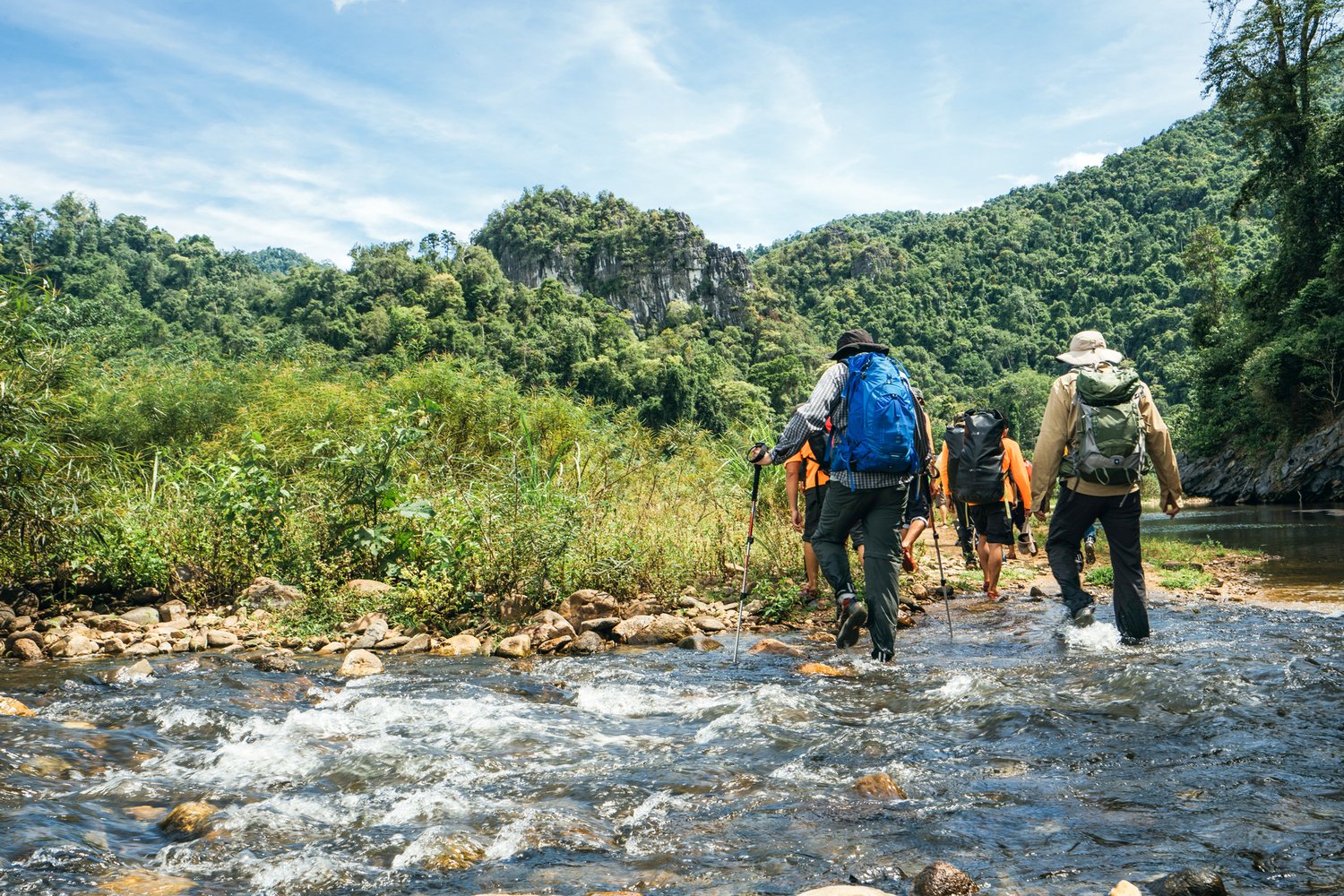
Top 7 caves in Phong Nha – Ke Bang National Park
There are two types of caves in Phong Nha – Ke Bang National Park: show caves for easy exploration and adventure caves for thrill-seekers. Here are the top caves:
1. Son Doong Cave
Son Doong Cave was first discovered in 1990 by a local man, Ho Khanh, but remained unexplored until 2009 when the British-Vietnamese Caving Expedition Team surveyed it. Son Doong Cave quickly gained global fame for being the largest cave in the world. With an estimated length of 9 km, chambers 200 m high and 160 m wide, and a total volume of 38.5 million m3, Son Doong is a true natural wonder. Imagine a cave being so big that it even has its own weather patterns and ecosystem inside.
Entry to Son Doong Cave is strictly limited to guided tours, requiring a multi-day trek through the jungle, river crossings, and camping inside the cave. Inside, visitors will find underground jungles, towering stalagmites, massive skylights (Doline 1 and 2), and an underground river. Son Doong’s untouched beauty and sense of scale make it a once-in-a-lifetime experience. Due to restricted access and high demand, tourists may need to book their caving tours to Son Doong Cave in advance.
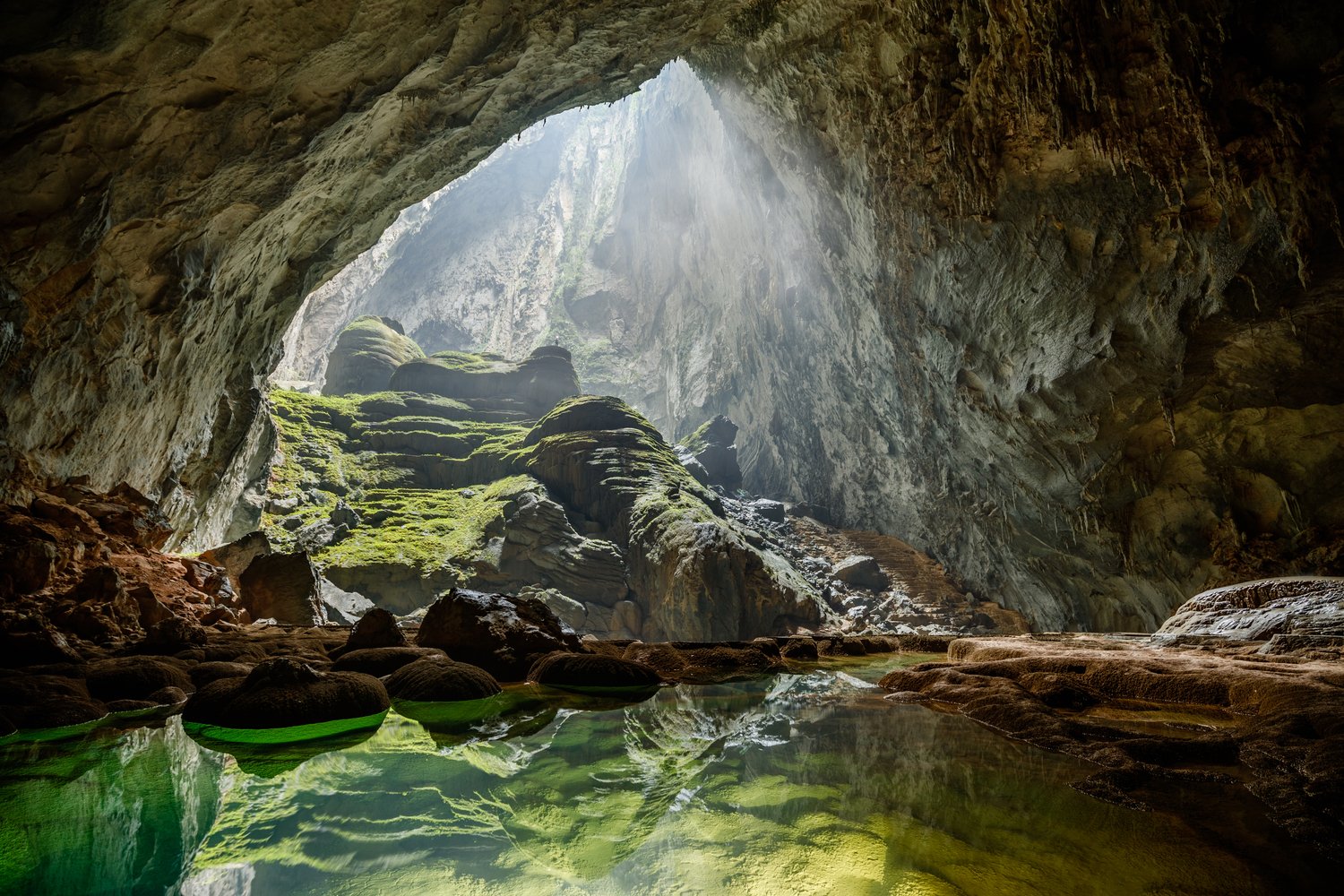
2. Hang En Cave
Hang En, meaning “Swallow Cave,” was used by locals and indigenous tribes (the Arem people) as shelter for centuries. It attracted global recognition after being showcased by major media outlets like National Geographic, The New York Times, Lonely Planet, and Good Morning America. Notably, in 2015, Hang En Cave was featured in the Hollywood blockbuster “Pan: In the Neverland.” Stretching 1.6 km in length, Hang En features a campsite inside the cave next to an emerald-blue underground river.
As an adventure cave, Hang En requires a two-day trek to reach and back via guided tours. This involves river crossings, jungle hiking, and an overnight stay inside the cave. The cave’s massive entrance and natural light create a surreal atmosphere. Inside, there’s a sandy beach, a stunning blue-green underground lake, and thousands of swallows nesting along the ceilings. Camping in Hang En is a one-of-a-kind experience, with the breathtaking sight of the sunrise illuminating the cavern’s entrance.

3. Phong Nha Cave
Phong Nha Cave was one of the first caves in Phong Nha – Ke Bang National Park to be extensively surveyed, leading to the park’s UNESCO recognition. It has a total length of 7.7 km, though only the first 1.5 km is open to tourists. The cave is known for its fascinating rock formations, named “Lion,” “Unicorn,” “Kneeling Elephant,’ and “Buddha.” Phong Nha Cave also features a vast underground river that is over 13 km in length, making it one of the longest water caves in the world.
After traveling 19 km underground, the Son River emerges from the cave, winding through an expansive landscape of majestic limestone mountains that encircle Phong Nha. As a show cave, Phong Nha Cave is easily accessible. Visitors take a scenic boat ride on the Son River to reach the entrance. Inside, visitors will find majestic stalactites and stalagmites, natural rock formations resembling animals and mythical creatures, and the serene underground river, all beautifully lit for an ethereal experience.

4. Hang Va Cave
Discovered for the first time in 1992 and surveyed in 2012, Hang Va Cave remains one of Phong Nha – Ke Bang’s most unique caves. It’s part of the same cave system as Son Doong Cave, formed over millions of years by underground water flow. Hang Va Cave is about 1.7 km long and features a complex network of tunnels, water-filled passageways, and, most magnificently, the towering cone-shaped stalagmites scattered along a 150-meter-long chamber, unlike any other cave in the region.
As an adventure cave, Hang Va Cave is accessible only through guided tours, available from February to August. Inside, adventurers will find rare stalagmite formations, glowing cave walls, and a labyrinth of passages. To this day, the exact formation process of the cone-shaped stalagmites in Hang Va remains a mystery. One hypothesis suggests that steady drips from fixed points cause calcium carbonate to precipitate underwater, gradually building up on the pool floor to create distinctive cone shapes.
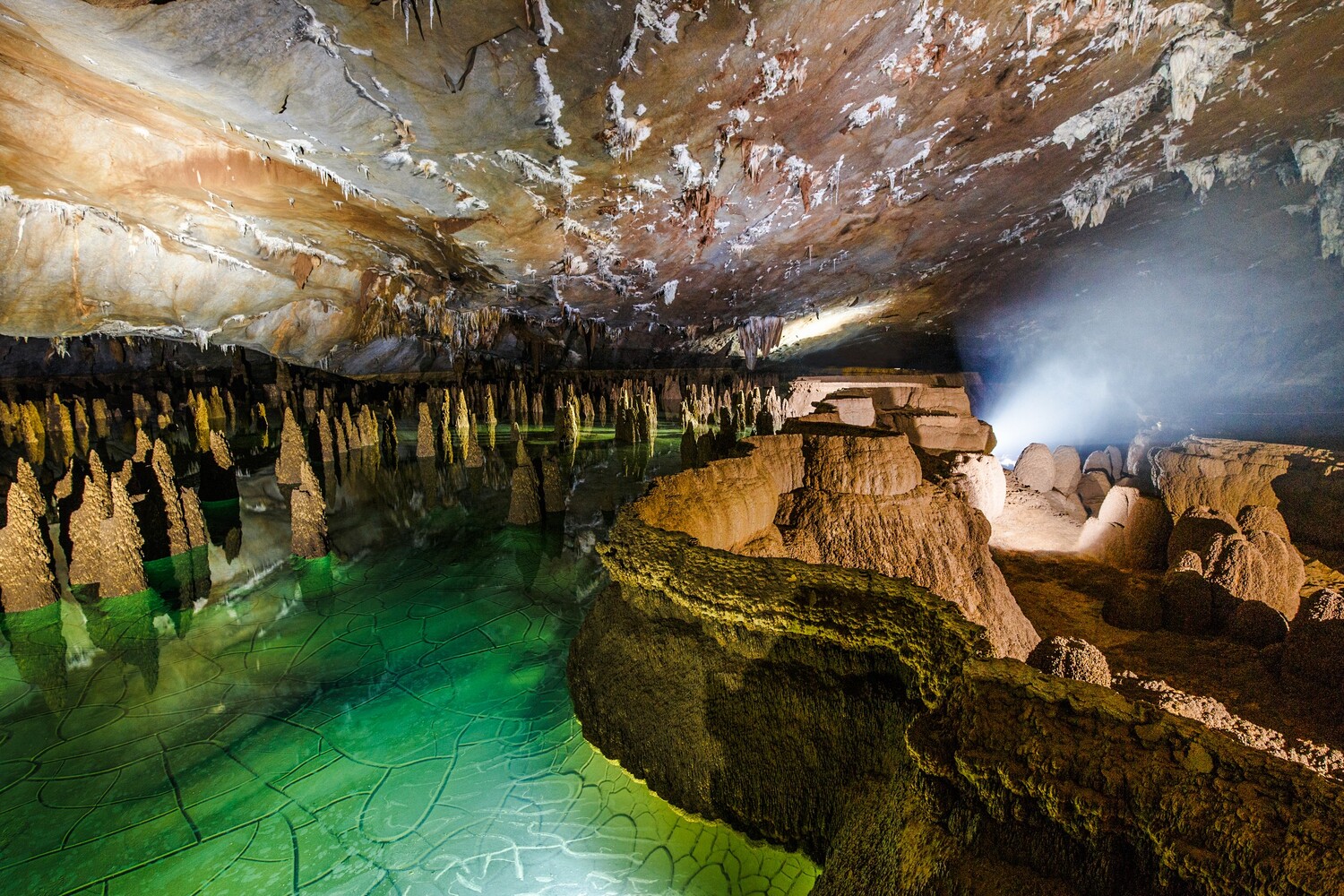
5. Paradise Cave
First discovered by locals in 2005 and later explored by the British Caving Expedition Team, Paradise Cave (Dong Thien Duong) quickly became one of the most famous caves in Phong Nha – Ke Bang National Park. Stretching an impressive 31.4 km, Paradise Cave is the longest dry cave in Asia. Inside, the cave boasts cathedral-like chambers with ceilings reaching up to 70 m high and some of the most spectacular stalactites and stalagmites found anywhere in the world.
Similar to Phong Nha Cave, Paradise Cave is easily accessible, with paved walkways, 1-kilometer-long wooden stairs, and a lighting system. Compared to Phong Nha Cave, Paradise Cave is considered to have more breathtaking rock formations, natural limestone sculptures, and massive columns. Visitors can also choose to explore further into the cave, with on-demand tours guiding adventurers 7 km deep to witness the Skylight, a stunning sinkhole that allows light to filter through during the day.
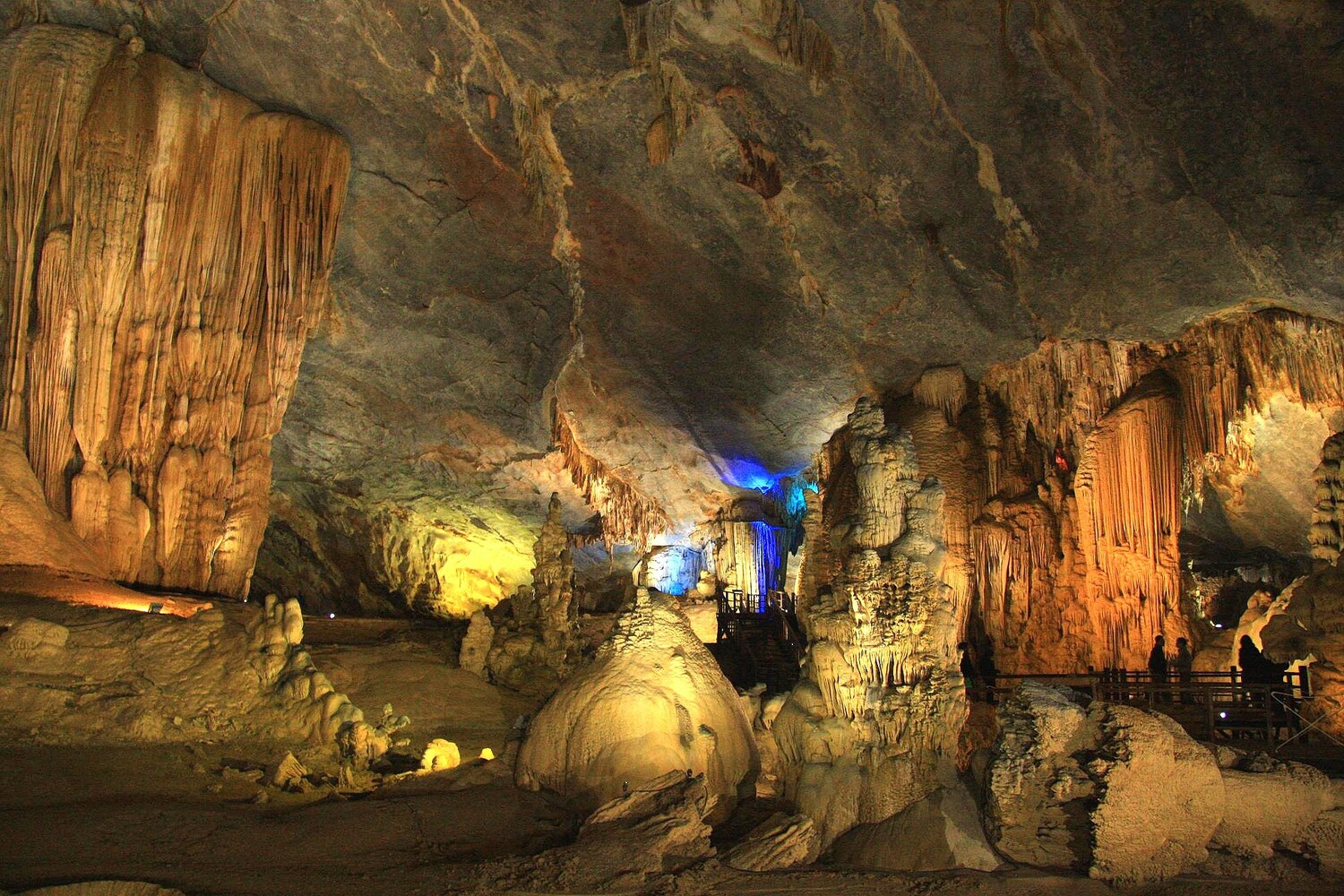
6. Tien Son Cave
Discovered in 1935 by local residents, Tien Son Cave, also known as the “Castle of Stalactites,” sits high above Phong Nha Cave and is often visited together with it. Tien Son Cave is 980 m long, featuring stunning stalactites and stalagmites that create dazzling natural sculptures. About 400 m from the cave entrance, a 30-meter-deep abyss leads to an underground passage stretching another 500 meters. Due to the hazardous terrain, tourists can only explore up to 400 m inside the cave.
Unlike Phong Nha Cave down below, Tien Son is a dry cave, meaning there is no underground river, but it does feature an incredible natural acoustic effect—tapping on certain formations produces bell-like sounds. This show cave is accessible via a railed staircase of 330 steps, offering visitors a rewarding view of the Son River below before entering its breathtaking chambers. Inside, towering limestone pillars, shimmering crystal-like formations, and naturally carved arches create a magical atmosphere.

7. Dark Cave
Discovered in 1990, Dark Cave (Hang Toi) is one of the most exciting tourist attractions in Phong Nha – Ke Bang National Park. The cave stretches nearly 6 km, with narrow tunnels, high-ceiling chambers, and a natural mud bath inside. Unlike other caves with artificial lighting, Dark Cave, as its name suggests, stays completely unlit, allowing visitors to experience it with only headlamps. Located near the Chay River, the cave is accessible by ziplining across the water before entering the cave’s dark passages.
Inside Dark Cave, tourists can explore its hidden corners before reaching the natural “mud spa.” This mud spa forms during the rainy season, offering a unique experience that is both exciting and beneficial for relaxation and energy renewal. To explore Dark Cave, tourists must first enter the Chay River – Dark Cave tourist site, which offers adventure activities like ziplining and kayaking. Here, visitors can also enjoy nearby activities like rope challenges, water games, and paddling along the Chay River.
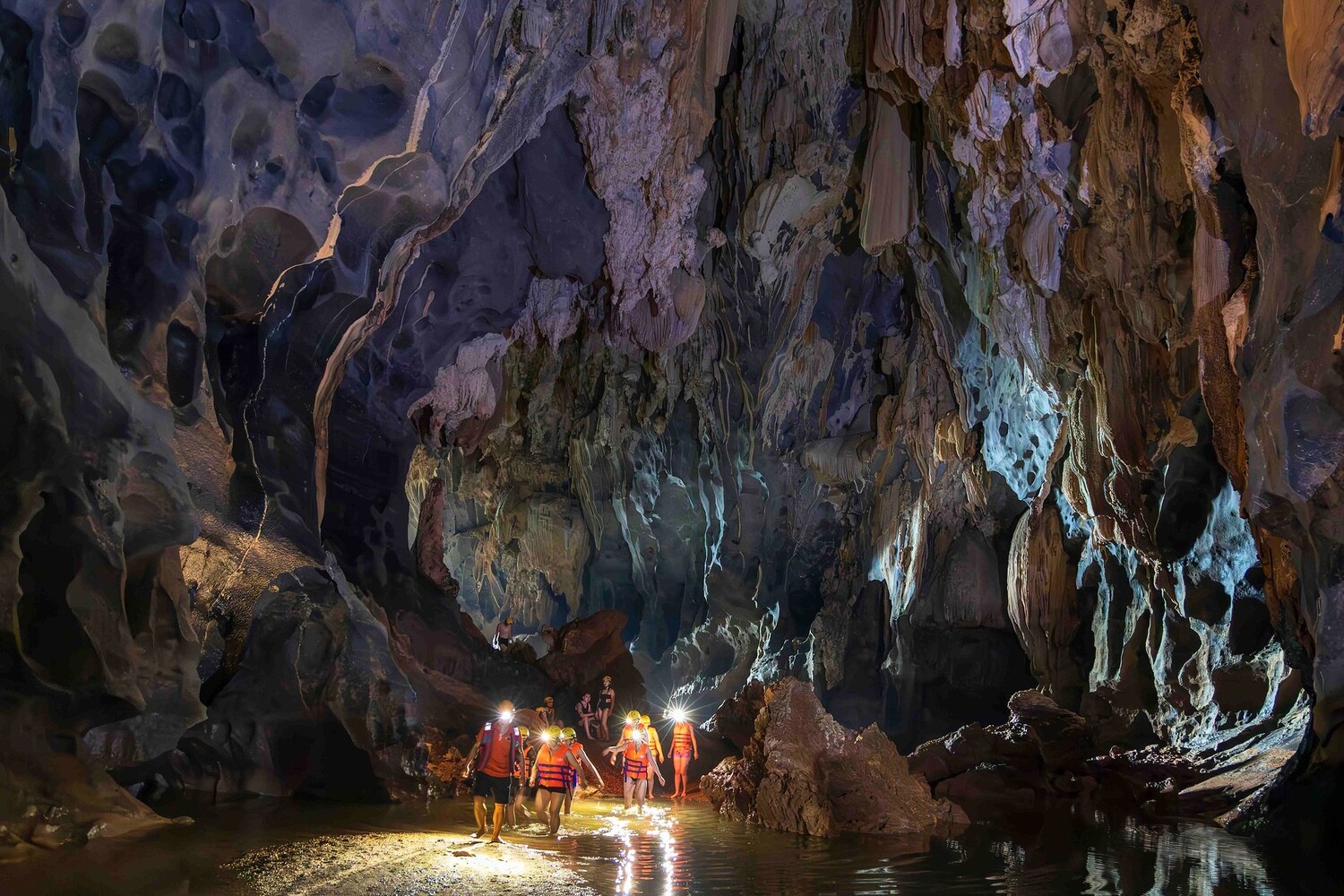
Cave tours in Phong Nha – Ke Bang National Park
Phong Nha – Ke Bang National Park offers a variety of cave tours catering to different levels of adventure. For show caves, including Phong Nha Cave, Tien Son Cave, and Dark Cave, tours are managed by the Phong Nha – Ke Bang Tourism Center, offering convenient and accessible experiences. Meanwhile, Paradise Cave is operated by the Paradise Cave Ecotourist Site, providing well-maintained walkways and guided tours.
For adventure cave tours such as Son Doong, Hang En, and Hang Va, visitors must book through Oxalis Adventure – Vietnam’s leading adventure tour operator. Oxalis offers multi-day cave tours, with tours lasting up to 6 days. This provides an immersive experience in the world’s most stunning caves. Beyond Phong Nha, Oxalis also operates tours in the Tu Lan Cave System, located 70 km northwest in Minh Hoa District. Compared to Phong Nha – Ke Bang’s cave system, Tu Lan is equally breathtaking.
To choose the right cave tour, consider your fitness level and adventure preference. Show cave tours are perfect for families, casual travelers, and those wanting an easy, scenic experience, with well-lit pathways and boat access. Adventure cave tours, on the other hand, require trekking, swimming, and climbing, making them ideal for thrill-seekers looking for a challenging, off-the-beaten-path exploration.
What to know before a cave tour
Before embarking on a cave tour in Phong Nha – Ke Bang National Park, consider these key factors to ensure a safe and enjoyable experience.
– Know your level: Assess your fitness, experience, and skills before choosing a cave tour. Show caves are easy to explore with walkways and lighting, while adventure caves require trekking, swimming, and climbing.
– Best time to visit: The dry season (December – August) is ideal for caving, offering stable weather and easier access. The rainy season (September – November) can cause flooding, restricting cave tours.
– Essential gear & clothing: Wear lightweight, quick-dry clothes, sturdy trekking shoes, and gloves. Bring a waterproof bag, extra socks, and insect repellent. For adventure tours, helmets, headlamps, and harnesses are provided.
– Book in advance: Popular caves, especially Son Doong, have limited spots and require early booking. Secure your spot months ahead to avoid disappointment. Even for show caves, early booking ensures a smoother experience.


